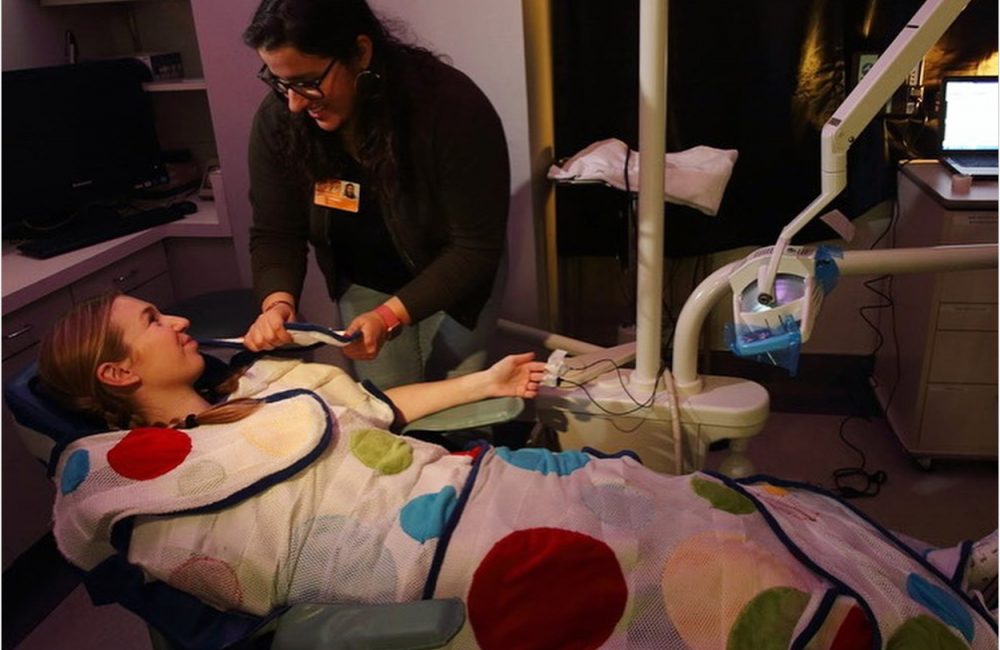
Researchers at the University of Southern California are developing strategies to improve oral healthcare for children with autism spectrum disorder (ASD) by dialing down the overwhelming sensory stimuli such as noises and smells encountered during typical dental treatment.
“Dental clinic visits can be incredibly taxing for the child, the parent, and the dental practitioner,” said Dominique Como, an occupational therapist and PhD student at USC supported by the National Institute for Dental and Craniofacial Research (NIDCR). “I want to find ways to make this a better experience for everyone.”
With NIDCR support, Como and her colleagues are evaluating sensory adaptations to the dental environment that can help to reduce anxiety in children with ASD. Since 2000, NIDCR noted, the prevalence of ASD has increased from one in 150 to one in 54 children in the United States.
These growing numbers mean that more dental practitioners are encountering these patients, but studies have shown that many dental providers feel unqualified to work with patients with special needs, NIDCR said.
Como and her colleagues have developed suggestions for addressing these challenges and a blueprint for reducing dental treatment barriers for ASD patients. They recommend collaborations among dental clinicians and specialists such as occupational therapists, who can contribute their expertise and help dental providers learn to identify and accommodate the needs of ASD patients.
For example, interdisciplinary teams are now creating sensory-friendly experiences for children with ADS. Strategies such as removing bright lights and loud noises, adding calming music, and covering children with a weighted blanket that simulates a firm hug can be calming and help prevent sensory overload.
New environments and unpredictable situations also can distress children with ASD, the researchers said. For their study, the researchers developed a social story with real-life photographs of a child receiving care in the dental clinic.
Before a visit, parents were asked to read the stories to their children to help them prepare for the upcoming dental activities. Visual aids that break down procedures step by step also may help children with ASD prepare for dental visits, the researchers said.
While Como and her colleagues are still evaluating the strategies’ effectiveness, families have described the interventions positively and reported some success in enhancing their children’s oral care. Como also encourages clinicians to seek the expertise of parents, who can help tailor strategies to their child’s unique needs.
“Interdisciplinary collaboration can bring numerous insights,” said Como. “So many factors of our health are interconnected. Our interventions should be as well.”
The study, “Oral Health and Autism Spectrum Disorders: A Unique Collaboration Between Dentistry and Occupational Therapy,” was published by the International Journal of Environmental Research and Public Health.
Related Articles
Donations Fund Two Dental Suites at Texas Tech University
Dental Schools to Train Clinicians in Treating Patients With Disabilities
Autism: A Humanistic Approach to Dentistry












